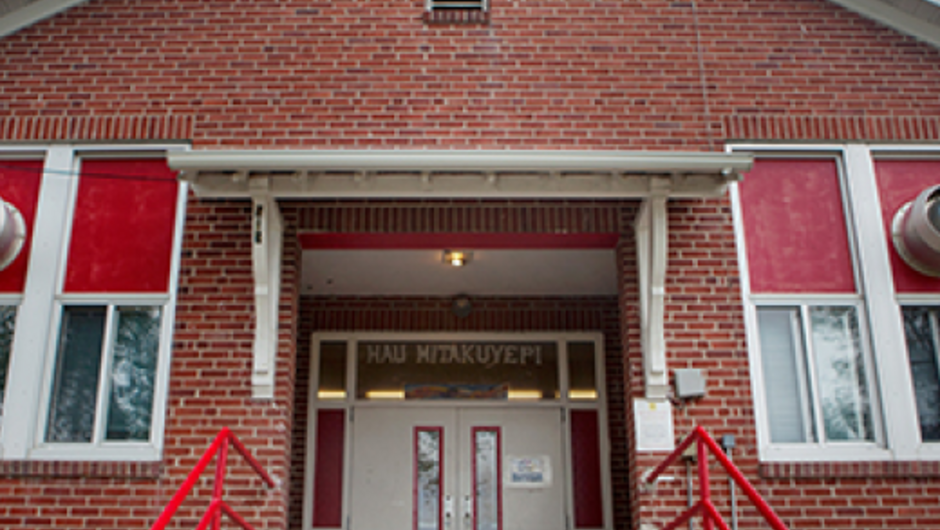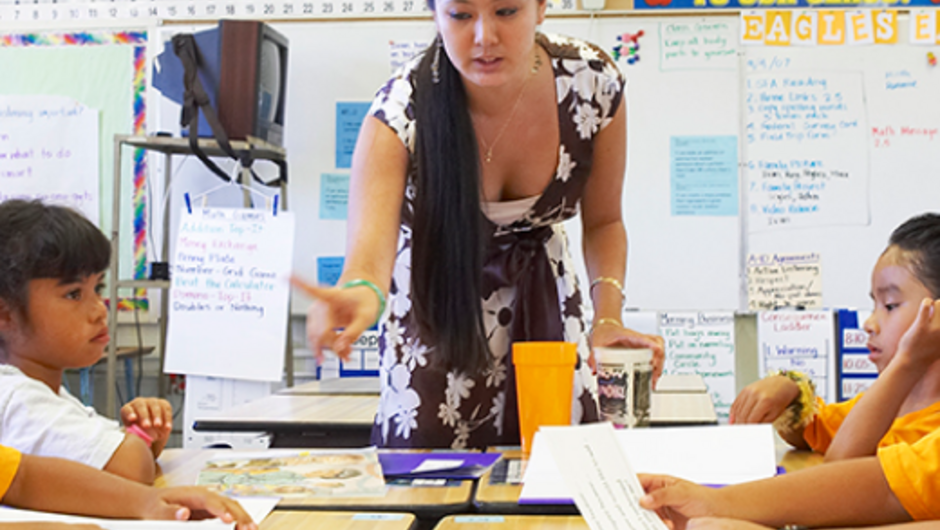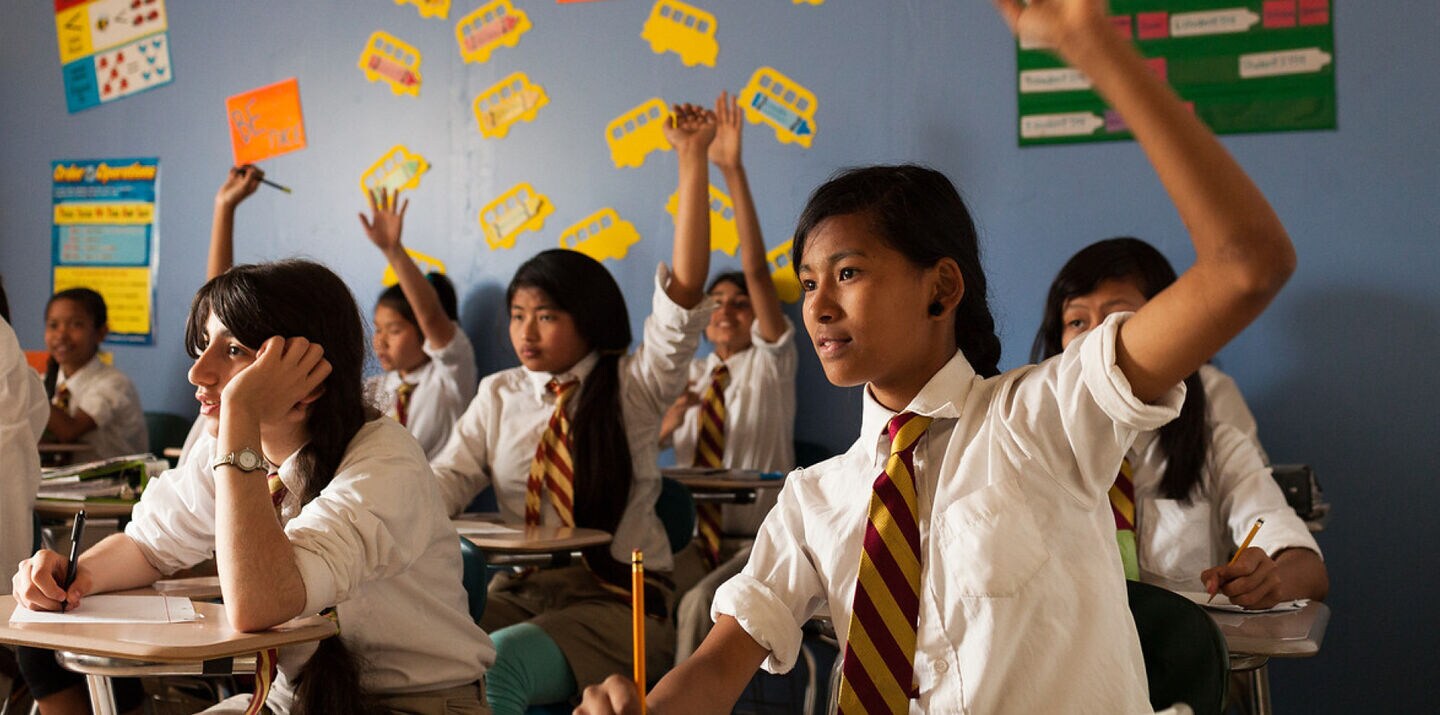
Students Labeled 'Asian' Are Not a Monolith. Why Are Schools Treating Them That Way?
Schools are failing to explore the diverse experiences of Asian, Native Hawaiian, or Pacific Islander students.
There was no option to check Native Hawaiian or Pacific Islander as her ethnic identity when Esiteli Hafoka was a child in the early ’90s. So Hafoka, who was born and raised in Stockton, California, and her parents, who emigrated from Tonga, an island kingdom in the South Pacific, checked “Other.”
“Folks didn’t really know what a Tongan was, what a Polynesian was. They didn’t know what to make of us,” Hafoka, now 39, recalled.
Hafoka grew up in a community that was home to many families from Southeast Asia, and being grouped together with first-generation Asians seemed logical, she said. The two groups seemed to share similar challenges caused by language barriers, such as children translating English for their parents, Hafoka said.
But “when I grew up, I started to understand how messed up it was to be lumped together with Asians,” she said.
Asians are the fastest-growing racial group in the country and claim ancestry from more than 20 countries. In the U.S., 22.6 million people identify as Asian, and 1.6 million identify as Native Hawaiian or Pacific Islander, according to Census estimates. These groups are among the most socioeconomically diverse and ethnically heterogeneous in the U.S., but they often share one broad, amorphous label within the reams of data that K-12 schools collect: Asian.
Such monolithic grouping dilutes the educational needs of students who are Asian American, Native Hawaiian, and Pacific Islander, as well as those who may face economic hardship or English proficiency challenges, said Stan Lou, vice president of education and culture for the nonprofit organization OCA - Asian Pacific American Advocates.
“East Asians have been taken as a standard for all Asians. That’s not fair to other groups,” Lou said.
Data, a powerful tool for educators, could help paint a clearer picture of the academic experiences of students of Asian and Pacific Islander descent. "Schools use disaggregated data—information about student performance that is broken down by students gender, race, ethnicity, and their families’ economic status—to better understand how well they are serving those students,” said Brennan McMahon Parton, vice president of policy and advocacy at the Data Quality Campaign.
“If a school’s overall academic performance is meeting standards, but school leaders notice that, for instance, Asian American males are not doing as well, they must unpack what may be happening in the classroom and what additional supports are needed for that group of students.”
Schools collect data they are required to report to the federal government. For decades, the U.S. Department of Education required student data for five categories: American Indian or Alaska Native, Asian and Pacific Islander, Black or African American, Hispanic, and white. In 2007, the department expanded those categories, adding an option two or more races and making Native Hawaiian or other Pacific Islander a separate category.
The federal Every Student Succeeds Act requires states to collect information on academic performance, disaggregated by subgroups of students. States have the option to further break down Asian American and Pacific Islander students into more precise subgroups. “This is an acknowledgment that AAPI students aren’t a monolith, and different communities may need different supports in the school setting to succeed and excel,” Parton said.
Even with that option, many schools still do not disaggregate their data on students who are Asian American and Pacific Islander.
Better Data Helps To Dispel the Harmful 'Model Minority' Myth
Education outcomes vary dramatically between subgroups of students who are Asian as well as those who are Pacific Islanders. And despite the “model minority” stereotypes of Asian Americans’ success, not all subgroups under the Asian American and Pacific Islander umbrella are high-achieving, upwardly mobile, or affluent. For example, 24% of U.S. residents 25 and older who are Native Hawaiians and Pacific Islanders had a bachelor’s degree or higher in 2018, Census data shows. That number is more than twice as high for the nation’s Asian population, 54%. Imprecise labeling may also mask important trends such as discipline disparities or bullying. For example, South Asian Muslims may face higher levels of anti-Muslim discrimination.
“I am a huge, huge advocate for disaggregating data,” said Hafoka, who is a Ph.D. candidate at Stanford University and volunteers with K-12 Tongan and Pacific Islander students to improve their educational opportunities. “The ridiculous model minority myth has covered up the disparities that Tongan Americans and larger groups of Polynesians are dealing with in terms of educational attainment.”
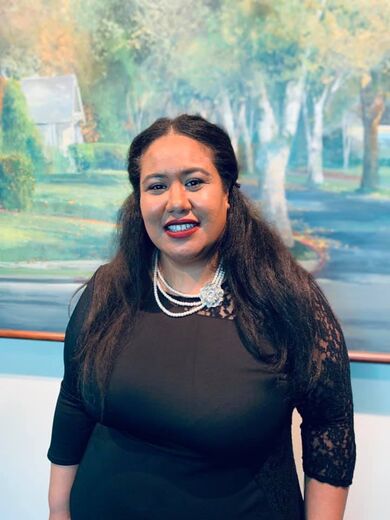
U.S. students who are Pacific Islanders face academic disparities, contending with high dropout rates, low attainment of four-year degrees, and an “athletic myth” that Pacific Islanders excel in sports. Although Asian American groups such as Indian Americans and Taiwanese Americans boast high rates of college attendance, less than a quarter of Pacific Islanders and Native Hawaiians hold a bachelor’s degree.
Educators also understand the need for different strategies to help Asian refugees from Myanmar, Laos, or Bhutan, many of whom experience lower education attainment due to their experiences fleeing religious persecution or war. But for many students and their families, being labeled as Asian comes as a surprise.
That’s often the case for the K-12 students that Luma Mufleh works with through Fugees Academy, the nationwide network of refugee-focused schools that she founded. Many of her students are from Myanmar, Bhutan, and Afghanistan, and they do not immediately understand they will be absorbed into the Asian category when they enter the U.S. education system. Many students are still learning English. Also, most students from Myanmar typically refer to themselves by their ethnic affiliation—such as Rohingya, Karen, or Chin—instead of saying they are Asian or Burmese. In these instances, the Asian label not only feels unfamiliar, but reductive.
When filling out demographic data for SAT exams, students often appear confused about which racial identity to select, Mufleh said. Although they know they originated in Asia, many refugees from Myanmar believe there is a gulf of difference between them and East Asians. Despite being newcomers, they also still grapple with the model minority myth. Mufleh has heard students from Myanmar receive comments like, “Well, you’re Chinese, you should be good at math.” It’s not unheard of for her students to ask who qualifies as Asian or what the model minority myth actually is, prompting a discussion about how some groups may face a high degree of pressure to excel.
For Some Students, Test Questions About Ethnicity Don’t Have Easy Answers
Many South Asians also discover they are considered Asian through standardized testing.
Ravina Panaparambil, a 16-year-old Indian American in Dallas, Texas, had to tick an ethnic identity box during admission for a gifted program in middle school. At the time, she chose “Other,” but when taking Advanced Placement and SAT exams, she could be more precise about her identity and select “Asian – Indian subcontinent.” Now, she looks for blank lines in forms where she can fill in the missing demographic information.
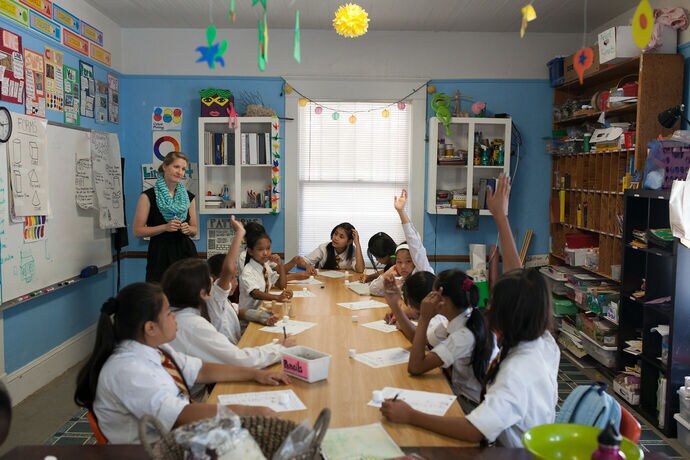
“When identifying myself as Asian, I think that Asia is so huge. And when I say I’m Asian American, people might think I’m East Asian,” the high school junior explained.
Similarly, for a long time, 16-year-old Nidhi Enjeti of Plano, Texas, did not realize she was considered Asian American until her parents told her. When she was in fourth grade, Enjeti returned to the United States after living in India and asked her parents how to fill out her passport forms.
“I didn’t conceptualize Indians as Asians. I remember being in America and asking them, why is there not an Indian-American box? Do I put American Indian or do I put Asian?”
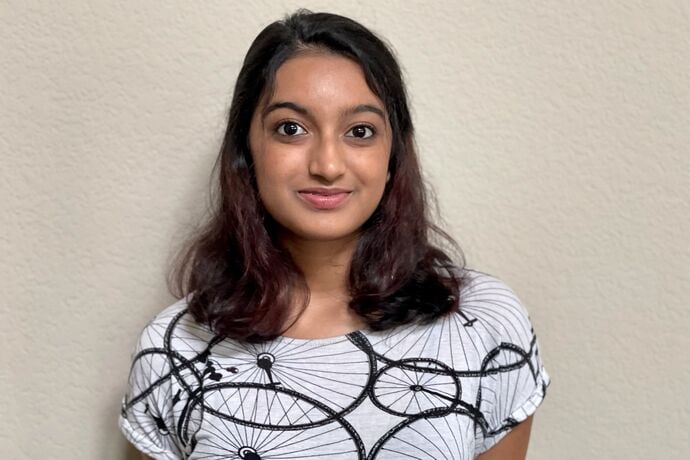
“I feel very strange calling myself Asian,” Enjeti said. She felt that way despite some shared experiences: “We know what it feels like to have our names mispronounced, and our food called smelly.”
In the classroom, East Asians and South Asians face assumptions about their intelligence and that their parents push them to succeed.
“l recognize that the model minority myth pits students of color against each other,” said Anh Nguyen, a 16-year-old Vietnamese-American high school student in Houston, Texas. “It’s detrimental to Asian American students as a whole.”
Pressure to outperform siblings or appear as docile students with records of high achievement can engender new forms of academic struggle. Asians who fail to excel in science, technology, engineering, or mathematics—STEM courses—can face increased judgment or pressure from peers.
Ilma Lodhi, a Pakistani American math teacher in Evanston Township, Illinois, often encourages conversation around social equity and justice, allowing students to openly discuss recent events impacting the Asian community, including the March shootings at spas in Atlanta in which eight people were killed, six of them Asian women. “I’m trying to thread humanity through math,” she said.
Lodhi discusses with students her experiences as a Muslim American, first-generation South Asian teacher, including her own struggles with math. She recalls how she did not know how to apply to college or complete the Free Application for Federal Student Aid, or FAFSA, when she was in high school. Lodhi said students responded positively, and some thank her for helping them feel “seen and heard.”
“As teachers, we can’t be culturally responsive and teach through appropriate learning styles if we never took the time to learn the culture and attached learning style for our students,” Lodhi said.
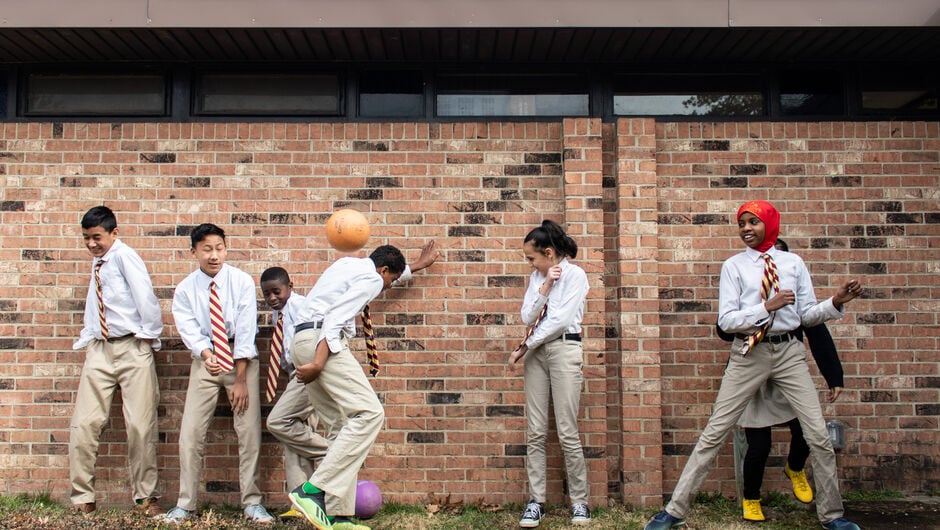
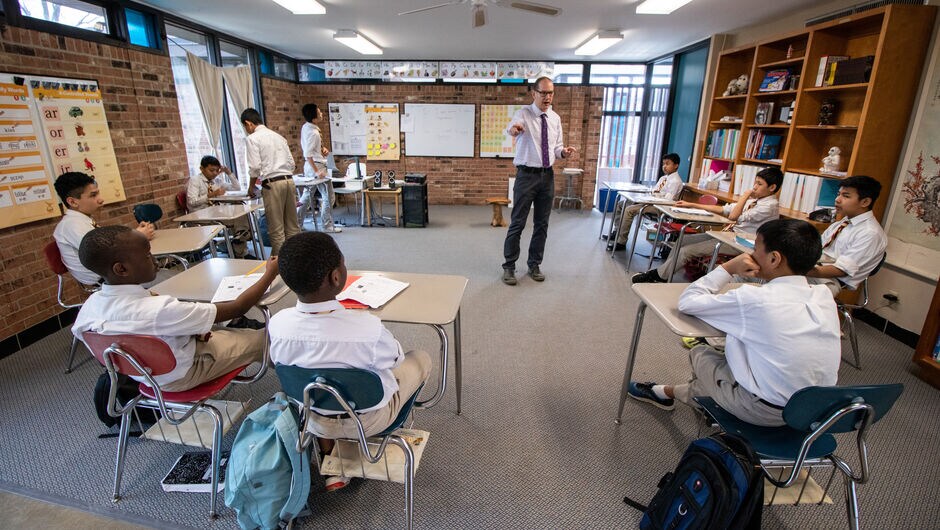


Emma Brown and Clyde Click/Fugees Academy
By closely monitoring race data, Lodhi said her school also strives to close opportunity gaps. When she first began teaching, Lodhi was taught to analyze data on behavior management, including racial disparities in discipline referrals and the number of Asians on the honor roll.
At the same time, Lodhi said, few teachers would admit to an underlying bias in how they teach based on the racial makeup of a classroom. Students at her school are placed in regular, honors, and modified classes for students who need extra support. Depending on the classroom demographics, "I see a shift in the teacher’s behavior, characteristics, and expectations,” Lodhi said.
“In honors and AP tracks, they are majority white students, and those teachers talk, behave, and expect differently, versus when they’re teaching a regular course which has more Black and brown students."
How Good Data Fosters Support and Inclusion
Teachers also play a key role in identifying or affirming students’ race or ethnicity.
On his first day in fifth grade, Aisea Muli Mohetau’s teacher asked him if he was from Hawaii.
“When they think of Pacific Islanders, they always think Hawaiian,” said Mohetau, who is now 15 and a high school freshman in Stockton, California. “When we tell them we’re from Tonga or Samoa, they always ask us, ‘What is Tonga?’ and ‘What is Samoa?’”
Most racial data is reported on annual school intake forms, but in the 1970s, educator Ting-Yi Oei was asked to carry out surveys identifying students by race at the beginning of his class. In rural Fauquier County, Virginia, he would assign students to aggregate categories including white, Hispanic, Black, or Asian.
“It was up to the teacher to decide,” Oei said. “The school and the state took my word for it.”
He knew there was nothing insidious—the state was compiling the data for demographic and statistical purposes—but it highlighted the growing importance of racial and ethnic data in pinpointing performance gaps.
When Oei, who is half-Chinese, joined a public school in Fairfax County, Virginia, as a school administrator, he also saw a large influx of Asian students in a school for underperforming students. “The Asian students surprised me—many of them exploded the model minority myth. You’re getting kids who are post-high school age, but never got credits to continue to stay with their class or [were forced to drop out]. They were not successful in a large public high school,” he said.
In assessing Asian American and Pacific Islander experiences in the classroom, data can show big-picture trends, as well as areas for improvement. But data can hide the diversity of Asian experiences. After 9/11, some Asian groups such as South Asians became targets of anti-Muslim backlash.
As a fourth grader in Slidell, Louisiana, Pakistani-American Fatima Mehr’s classmates bullied her for being Muslim, calling her a “terrorist” and ethnic slurs. After 9/11, students kicked her in the abdomen and pulled her hair in the restroom. None of her teachers intervened.
The bullying affected her academically: “I remember going from loving school to hating it. I barely passed my classes,” Mehr said. When she switched to a more diverse school district, her grades improved. She graduated as valedictorian of her high school.
In 2019, the Council on American-Islamic Relations in California released survey data indicating that 55% of Muslim students between the ages of 11 and 18 reported anti-Muslim bullying in the state’s schools—more than double the national average. Nearly half of the surveyed students said that Islam and Muslims were “rarely” or “never” mentioned in schools, pointing to curricular exclusion impacting how K-12 students understood one of the world’s fastest-growing religions.
That erasure—not only in data but also in curricula—has hindered broader awareness of the success, contributions, and evolution of people who are Asian American, Native Hawaiian, or Pacific Islanders.
“For Asian American students themselves, they need to learn about their own heritage, that they are important in this country,” explained Lou of OCA – Asian Pacific American Advocates, “because they’re being forever treated as a virtual foreigner.”
We want to hear your opinions! To submit an idea for an Opinion piece or offer feedback on this story, visit our Suggestion Box.
Sign up to receive articles like this in your inbox!
Thanks for signing up!
Content is loading...



